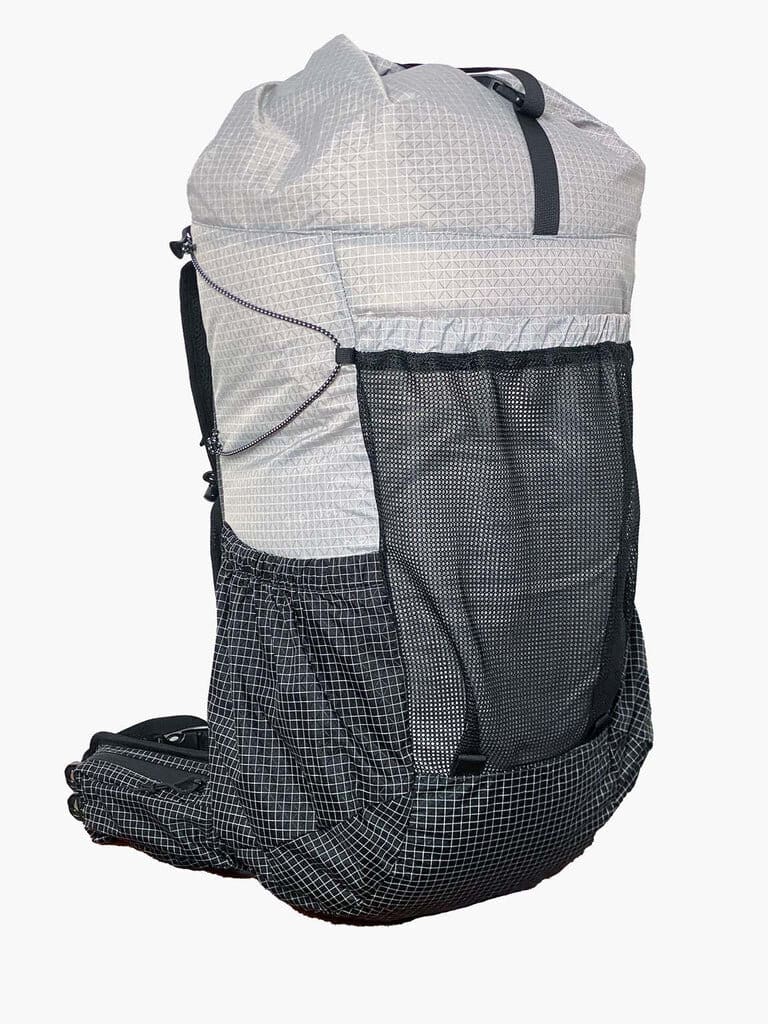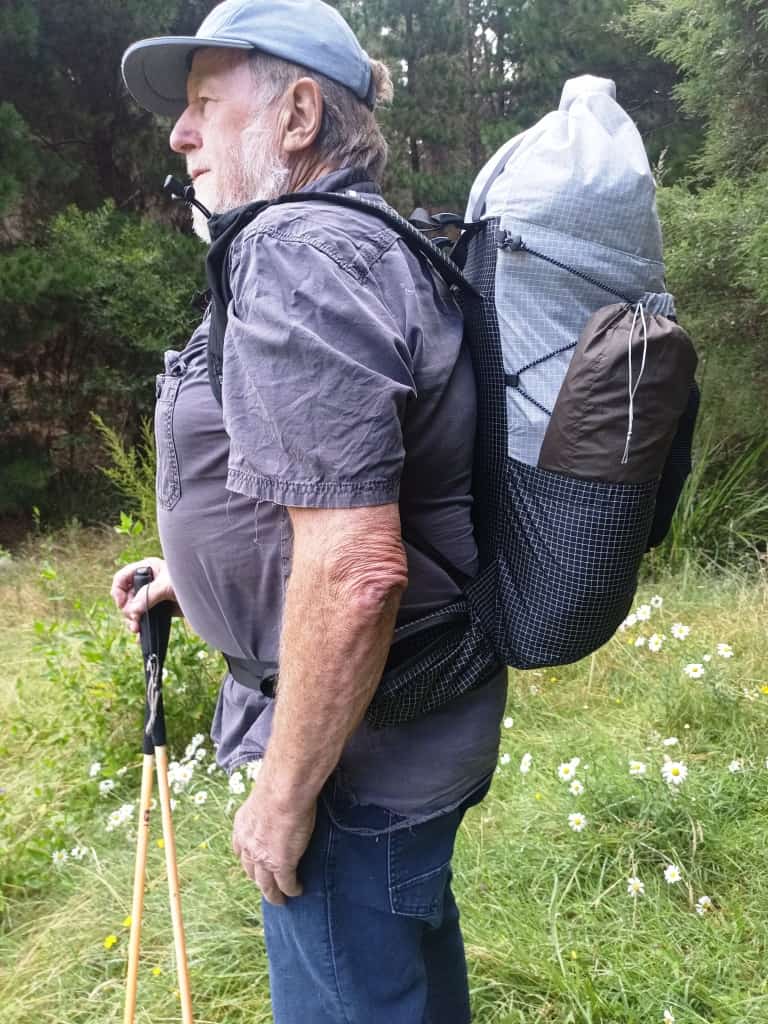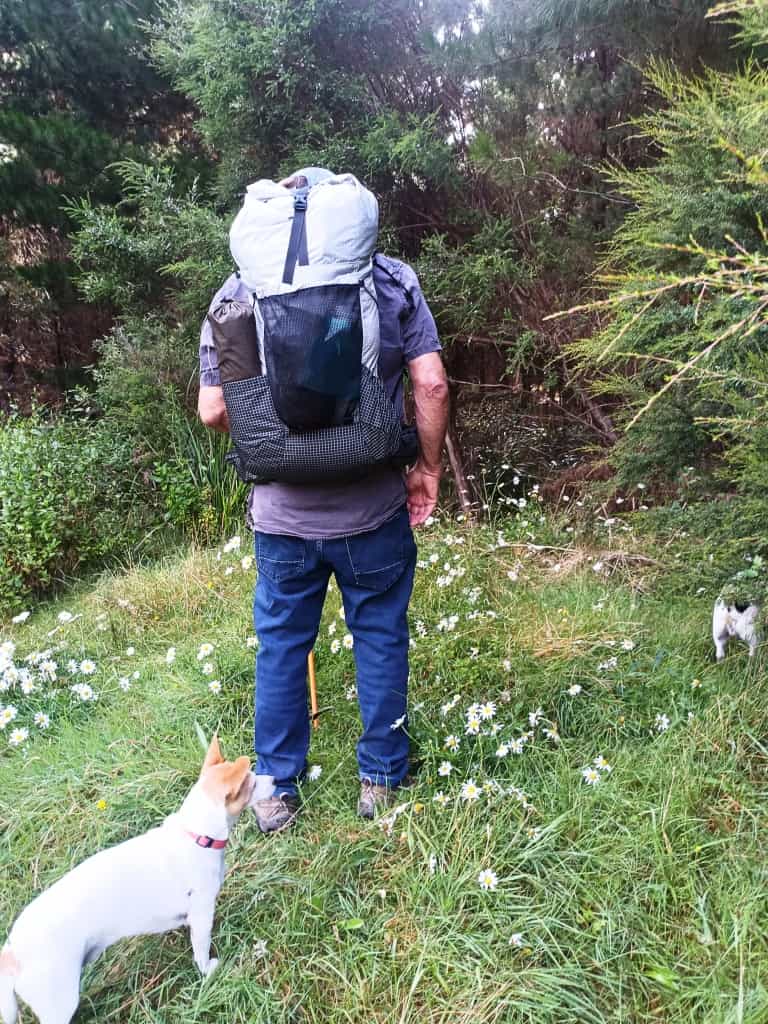I have recently discovered this excellent new Aussie cottage outfit, Neve Gear. They currently make and sell backpacks and quilts/sleeping bags – but I doubt it will end there.
They are young, having a go and deserve your support. They are making fine products which are competitively priced and as they are local (NSW) their service is excellent.
I have had a look at one of their packs as well as one of their quilts. I will come to the Waratah Quilt in a later post.

First, the Wallaroo Framed 45 Litre Pack at 775 grams and A$299 (Jan 2024): 41 (internal = small) is about ten litres smaller than I usually like, as most of my trips are multi-dayers usually with dogs, and I usually carry a bit more than my 50% share when walking with my wife, Della who is only 5′ and 40kg.
However, it is an excellent size for her. It would also be a fine size for an ultralight weekend pack. The size large is 7 litres bigger than this, ie 48.
I trialed the Size ‘Small’ because we both are, and I have found that backpacks very often are far too long for us. This one isn’t.
I have managed to squeeze enough gear into it anyway to enjoy 2-3 days away in the Victorian bush and have been trialing it on our afternoon walks around Yinnar, where we live. I even managed to compress their excellent Waratah Quilt (down to approx 4 litres) into it. I have had to learn some new pack arrangement skills instead of my usual throwing things in here and there. It would have been an excellent size for one of our EBC walks.
That is my Deerhunter’s Tent in the side pocket


It carries very comfortably. The shoulder straps are comfortably wide. It slips nicely into the small of one’s back. Mind you any ‘load transfer’ you might get from the lightweight frame and/or a waist/hip belt I feel is largely unnecessary in a small, light pack like this – but I know people have been ‘trained’ to expect them, and in this case they work very well, though I expect with only a max of maybe 8 kg in it (for me) it would probably carry just as well without the frame or the waist belt.
If you were using it to carry out 40 litres of deer meat from some remote valley the load transfer would not doubt come into its own – and it is tough enough and well enough built for this.
All summer I walk around our hills with a weed sprayer pack weighing 20- 25kg which has pretty harsh straps and no waist belt – and it has never bothered me.
Because I have mostly been overweight I find it just about impossible to get anything out of the hip belt pockets anyway – why I never use them. Della does however, and finds the commodious ones on this pack useful for her (larger) phone and sundry other knick-knacks. We are not all identical, you see.
We both carried similarly sized backpacks on the EBC (twice) where I found that I was not bothering to even do up the waist belt (but Della did).
I enjoyed the way that the pack swung to and fro without the belt, enhancing the natural rhythm of one’s stride and therefore making walking actually easier (for me).
Other people find just the reverse. Body shape no doubt has a lot to do with it. Curiously enough this pack suits both Della and myself, so it will probably suit (in its different sizes) a very large variety of people.
The waist adjustment system is quite unique and gives enormous flexibility and fit.
The pack has elastic side straps which could enclose longer gear (my tent for example) in the side pockets and a top strap which could be used to lash eg a sausage bag of extra food etc to the top for a longer trip.
I like this 4.8oz/yd2 Dyneema ripstop fabric. I have had Zpack ‘Blast’ pack for twenty years made from it. It has stood up to enormous abuse – much more than you are ever likely to subject a pack to on hiking trails. I am still using (and modifying) it.
For my purposes (let’s call it bush-bashing – with lots of blackberries anyway) I would prefer all the pockets to be made from it though.
The shoulder pockets and the back pockets on this (most) packs are a kind of mesh which makes things easier to see/find and can be used (allegedly) to dry socks – though I attach an external ‘ clothes line to my own packs for this purpose.
I find that I snag the mesh on blackberries etc (with my bush-bashing) and tear small or large holes in it which are hard to darn or replace the mesh – though we have done so on another pack. As you pretty much need the sewing skills needed to make your own this (mesh) feature of pretty much all packs is really for track walkers -0f which most folks are, alas.
I see other people have used this pack on longer walks such as Tasmania’s Overland Track with success. In the appropriate size and packed carefully I don’t see why you shouldn’t enjoy the same sort of trip – as I said you can attach some extra ‘luggage’ to it when starting out with the lash-down straps on top. I did this with (just such) a smaller pack on an eight day walk across Tasmania myself some years ago.
I do wish though more manufacturers when offering different ‘sizes’ for their packs did not co-ordinate pack volume with back length. Many of we (shorter) folks may still want to carry fifty+ litres on a long trip – which would be doubly uncomfortable if we had to do it in a too long pack, as I have too often discovered.
They could do this (I think) by simply sewing different attachment points on to the top straps so that they could be moved up or down to adjust for back length – at least to some extent.
All in all though, we are very happy with this pack and recommend it to you as an appropriate and economic local alternative.
See Also:
